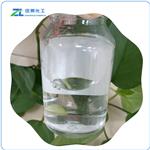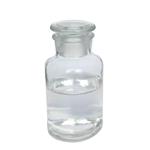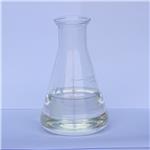Chemical Properties
2-undecanone, also known as methyl nonyl ketone, is a colorless to slightly yellow liquid and has a characteristic rue odor with a sweet flavor reminiscent of peach (on dilution). It naturally exists in Houttuynia cordata, bananas, strawberries, cloves, ginger and Rutaceae plants. The FEMA number is 3093, the FDA number is 172.515, and the CoE number is 150. methyl nonyl ketone is the active ingredient of Houttuynia cordata, mainly used in the production of medicines and fragrances, and is safer and more effective than DEET for mosquito repellents.
Physical properties
Methyl nonyl ketone (MNK) is a clear mobile liquid, with a strong characteristic smell at room temperature that presents a vapour pressure of 11.8 Pascals at 20° C. It has a very low solubility in water and high solubility in organic solvents such as n-heptane, p-xylene, 1,2-dichloroethane, methanol, acetone and ethyl acetate. MNK is not considered highly flammable or explosive or oxidizing.
Occurrence
Originally reported found in the essential oils of Ruta graveolens; subsequently was identified in the essential
oils of Citrus limetta Risso., Fagara xanthoxyloides Lamm. and Litsea odorifera Val. (leaves); a method for the determination of
methyl nonyl ketone in various rue species (Ruta montana, Ruta bracteosa) was devised; it is also present in the essential oils of
Jaborandi (leaves), Hottuynia cordata, Phellodendron anaurense, Schizandar nigra Maxim., and in coconut and palm oils; also
identified as the main constituent of the essential oil of Boronia ledifolia Gai; a 92% content level was reported in the essential
oil of Ruta chalepensis. Also reported found in rabbiteye, blueberry, feijoa fruit, feijoa peel, peach, raspberry, fresh black berry,
heated blackberry, strawberry jam, guava, allium, cloves, raw asparagus, shallot, roasted onion, ginger, Curcuma aeruginosa Roxb.,
Curcuma heyneana Val., banana, grapefruit, currants, peach, asparagus, shallot, onion, leek, chive, peas, potato, clove, ginger, pepper,
many cheeses, wheaten bread, butter, milk, cream, yogurt, milk powder, goat and sheep milk, caviar, raw and smoked fatty fish,
roast chicken, cooked beef, beef, chicken and pork fat, hop oil, beer, cognac, rum, sparkling wine, coffee, tea, roasted filberts and
peanuts, coconut meat, milk and oil, passion fruit, mushroom, wild marjoram, starfruit, Brazil nut, cardamom, rice, buckwheat, corn
oil, wort, elder flower, shrimp, crayfish, clam, maté and mastic gum leaf and fruit oil.
Uses
2-Undecanone may be used as an analytical reference standard for the quantification of the analyte in milk samples and
Houttuynia cordata Thunb using gas chromatography (GC) technique.
Uses
In the compounding of some synthetic essential oils. As fragrance additive in soaps, detergents, creams, lotions, and perfume. As dog and cat repellant.
Preparation
Can be isolated from natural oils by fractional distillation; also by dry distillation of calcium acetate and calcium caprylate,
or by boiling octylacetoacetic acid ethyl ester with and alcoholic KOH solution.
Definition
ChEBI: 2-Undecanone is a dialkyl ketone with methyl and nonyl as the two alkyl groups. It has a role as a rodenticide and a plant metabolite. It is a dialkyl ketone and a methyl ketone.
Aroma threshold values
Detection: 7 to 82 ppb
Taste threshold values
Taste characteristics at 30 ppm: waxy and fruity with creamy cheese notes
General Description
2-Undecanone is a naturally available nontoxic insect repellant, introduced as an alternative to insect repellants containing
N,N-diethyl-
meta-toluamide. It is isolated from the trichomes of wild tomatoes 2-Undecanone is also a volatile constituent, identified in milk and
Houttuynia cordata Thunb?(HCT), a traditional Chinese medicine.
Flammability and Explosibility
Not classified
Biochem/physiol Actions
Taste: @ 10 ppm.
Safety Profile
Moderately toxic by
ingestion. Combustible when exposed to
heat or flame; can react with oxidizing
materials. To fight fLt-e, use CO2, dry
chemical. When heated to decomposition it
emits acrid smoke and irritating fumes. See
also KETONES.
Synthesis
2-Undecanone's three synthesis methods is as follows:1) by oxidation of Undecanol-2.2) from Decanoic acid and Acetic acid, heated over Thorium oxide to 450℃.3) The isolation from Rue oil is of no commercial importance.





